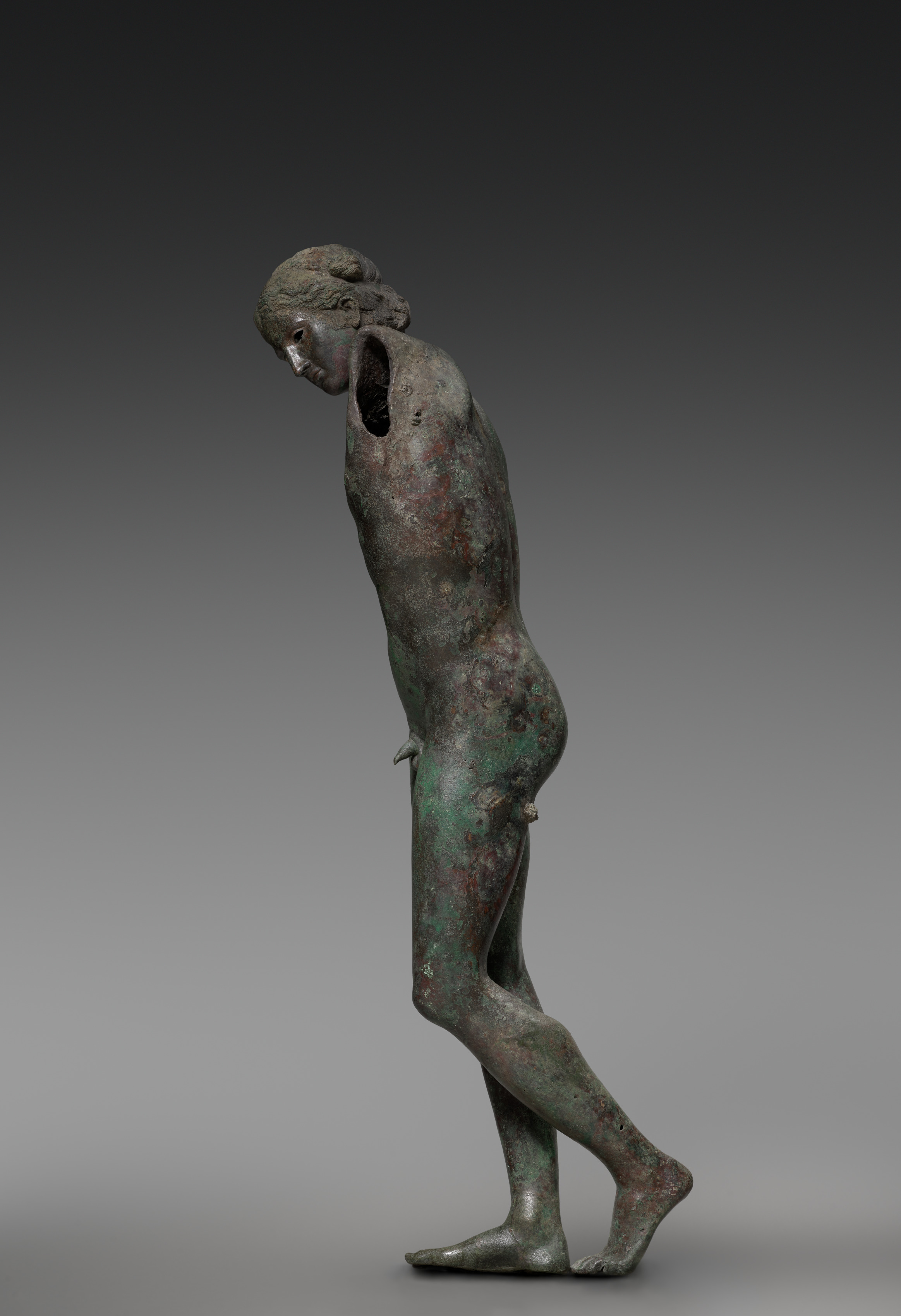The Cleveland Museum of Art
Collection Online as of April 24, 2024

The Cleveland Apollo: Apollo Sauroktonos (Lizard-Slayer) or Apollo the Python-Slayer
c. 350–200 BCE
attributed to Praxiteles
(Greek, Athenian, c. 400–330 BCE)
or Follower
Overall: 150 x 50.3 x 66.8 cm (59 1/16 x 19 13/16 x 26 5/16 in.)
Location: 100 1916 Lobby
Did You Know?
Ovals across the top of the right foot show a clear join between separately cast sections.Description
The Cleveland Apollo was cast in multiple sections using the indirect lost-wax technique. First, molds were taken from a working model (now no longer known or preserved), which was then reproduced in hollow wax sections, each filled with a clay core. After details were added to the wax models, each was encased in clay. Then, the wax was heated, melted out, and replaced by molten bronze. Once cooled, the hollow bronze sections were fused together and finished, patching flaws and adding inlays and other details. Since the initial model was retained, it could be reused, allowing ancient sculptors to create multiples and variations of favorite works. Thus, remarkably, the Cleveland Apollo may once have been one of several such works.The consistently thin walls of the Cleveland Apollo (mostly 5-6 mm thick), together with the nearly invisible joins between most cast sections, show that it was created by highly skilled sculptors and foundry workers. Close looking reveals several noteworthy features. First, ovals atop the right foot mark a fusion weld, where molten bronze pooled to join separately cast sections. Second, small rectangular bronze patches cover parts of the surface (especially the right hip), each carefully cut and then hammered into place over holes or other casting defects. Inlaid lips, nipples, and eyes (the right ancient stone, the left now a modern replacement) added to the lifelike appearance of the sculpture, contrasting with the once bronze-colored skin. Finally, radiography helps to illuminate hidden features, such as the cast edge of the neck of Apollo.
- Ernst-Ulrich Walter, Germany2004[Phoenix Ancient Art, 2004]2004-The Cleveland Museum of Art, Cleveland, OH
- Cleveland Museum of Art. The CMA Companion: A Guide to the Cleveland Museum of Art. Cleveland: Cleveland Museum of Art, 2014. Mentioned and reproduced: P. 83Stephen Ongpin Fine Art, and Stephen Ongpin. Renaissance to Futurism: A Selection of Italian Drawings, 1500-1920. 2015, 6. Mentioned in notes section, No. 2, Note 1 (unpagenated)
- Praxiteles: The Cleveland Apollo. The Cleveland Museum of Art, Cleveland, OH (organizer) (September 29, 2013-January 5, 2014).
- {{cite web|title=The Cleveland Apollo: Apollo Sauroktonos (Lizard-Slayer) or Apollo the Python-Slayer|url=false|author=Praxiteles, Follower|year=c. 350–200 BCE|access-date=24 April 2024|publisher=Cleveland Museum of Art}}
Source URL:
https://www.clevelandart.org/art/2004.30.a